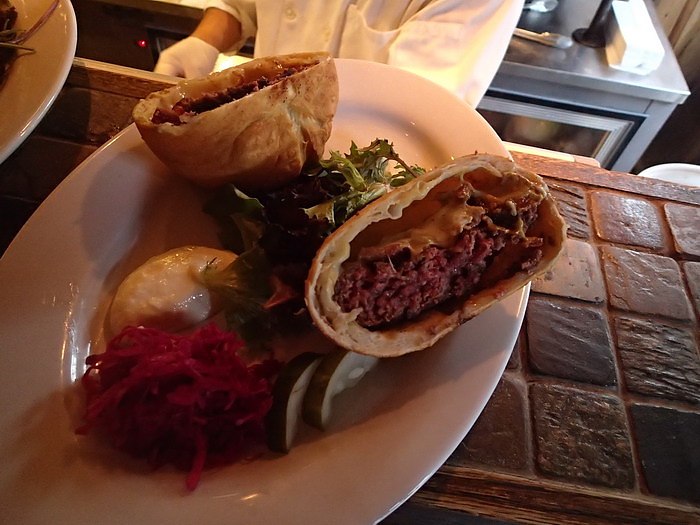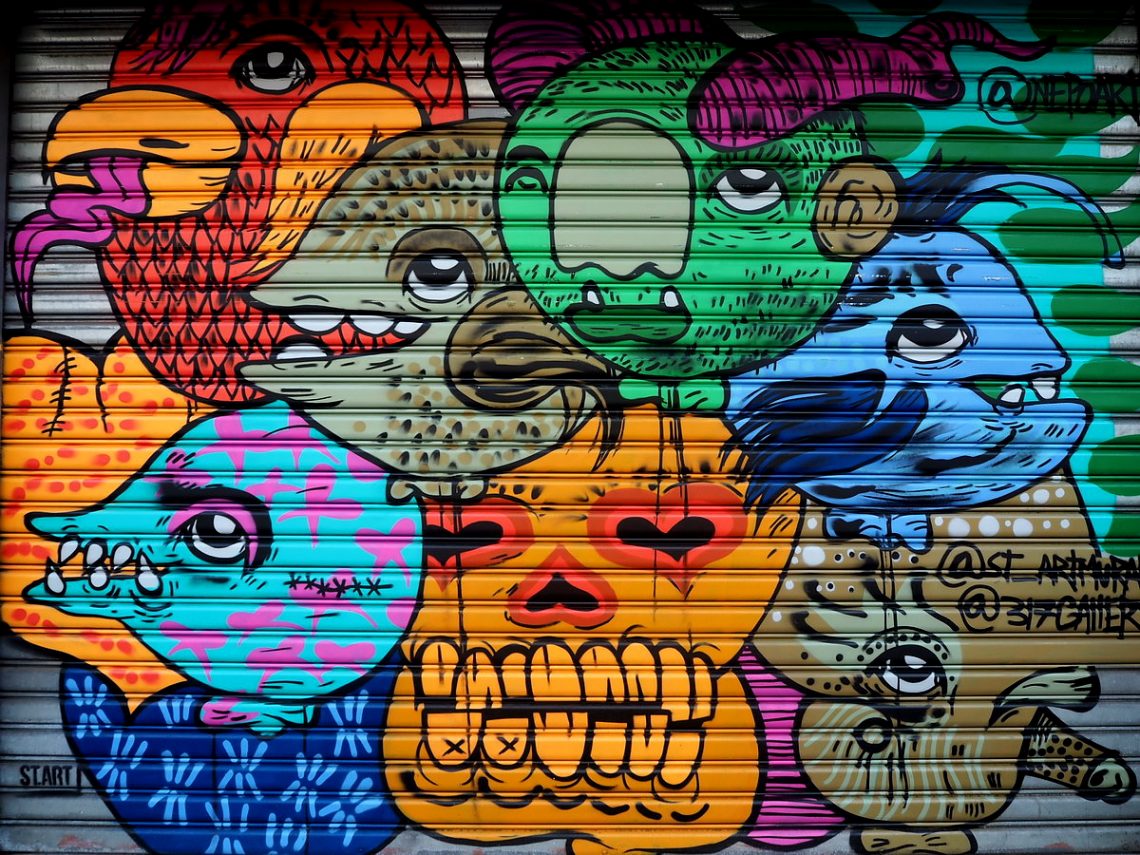EAST VILLAGE AND ALPHABET CITY
(Between 14th Street and Houston Street, east of Broadway)
My most favourite area of the city. A neighbourhood of atmospheric bars, graffiti, amateur theatres and moneyless youngsters. Jack Kerouac, Allen Ginsberg, William Burroughs and other greats of the beat generation were amongst the key people lending a special vibe to the area, and Velvet Underground and the Sonic Youth also gave their first concerts here. If you have no planned program for an evening, and just want to end up at an interesting place, you have the best chance here. Especially around Tompkins Square, you can find loads of bars, clubs or small restaurants.
Let’s start our discovery of the area on Astor Square. In the middle of the square, there is a huge black cube standing on its corner which – with enough effort – you can turn around.

At the south end of the square, you can see the back of the Cooper Union Foundation Building. This was the first coeducational school, the first that admitted children indiscriminate of origin and the first that offered free lessons to adults. Today it’s a well-known architectural school whose main hall is worth checking out.
The Public Theater’s building, made of bricks and brown sandstone, is at 425 Lafayette. Lots of famous shows started here before conquering the world, such as “Hair”.
Across the theatre, at 428-434 Lafayette, stands the Colonnade Row which was a collection of nine elegant houses. Famous writers and artists lived here, like Washington Irving and Charles Dickens.
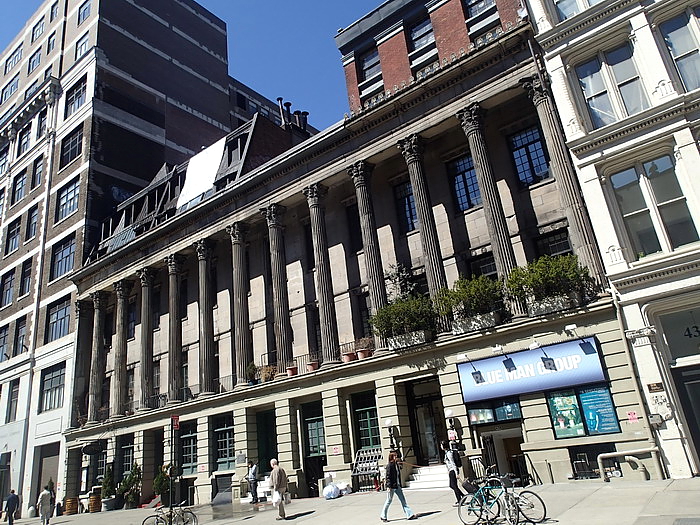
A few steps south at 29 East 4th Street is Merchant’s House, an adorable building. We can look inside the one-time home of a well-off trader and his family, the city’s only 19th century building that is still in its original form both inside and outside. The house which was built in 1832 from red bricks and white marble, gave home for a century to the Tredwell family and their Irish servants. Lovely building which is unmissable for someone who wants to learn about New York’s past.
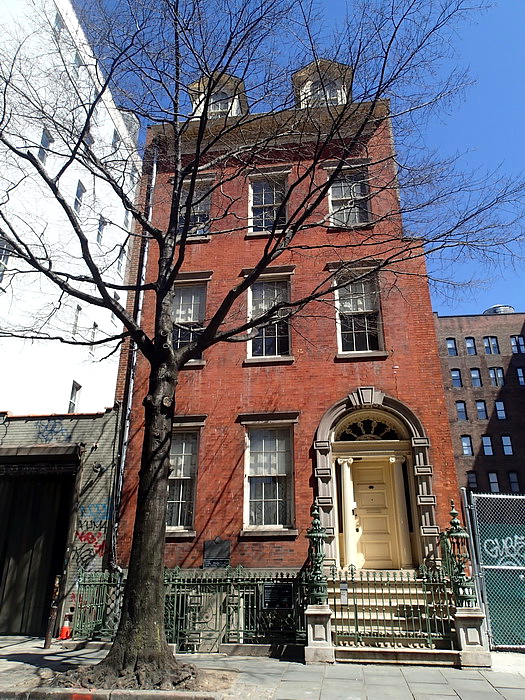
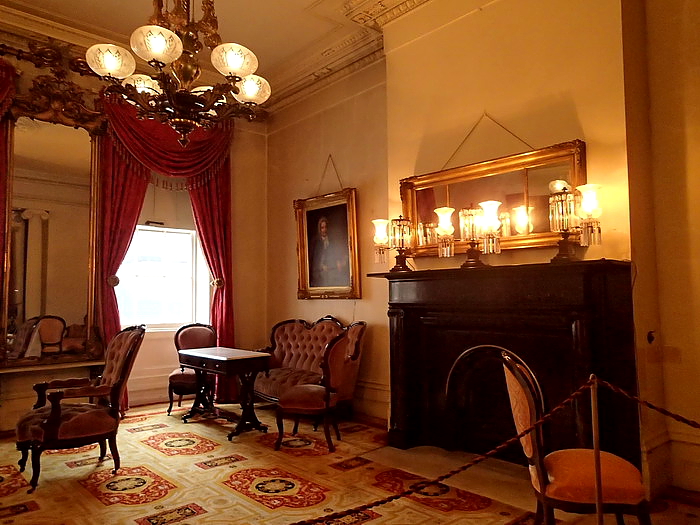
At 315 Bowery (near Bond Street) is the legendary concert hall, CBGB, where I still had the chance to see concerts but the club closed down in 2006. Today it’s a clothing shop but they have kept lots of the graffiti and memorabilia.
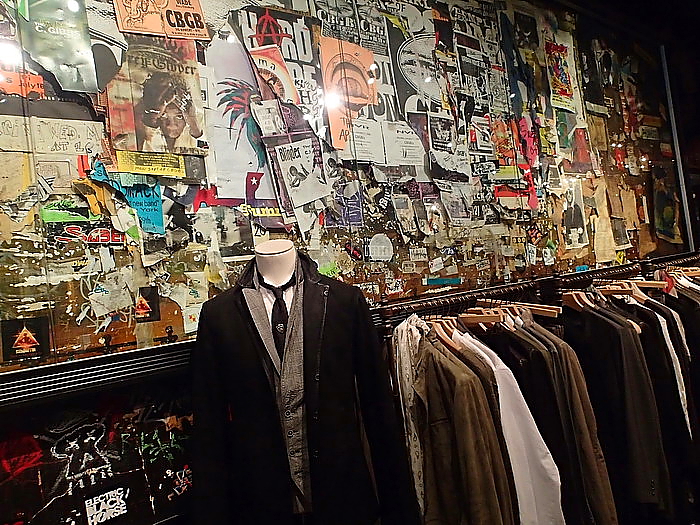
The city’s oldest pub, McSorley’s Inn which opened in 1854 is at 15 East 7th Street. Up until the end of the 1970s only men were allowed in. The floor is still covered with sawdust and you can read the old sign on the door: “Good Ale, Raw Onions and No Ladies”.
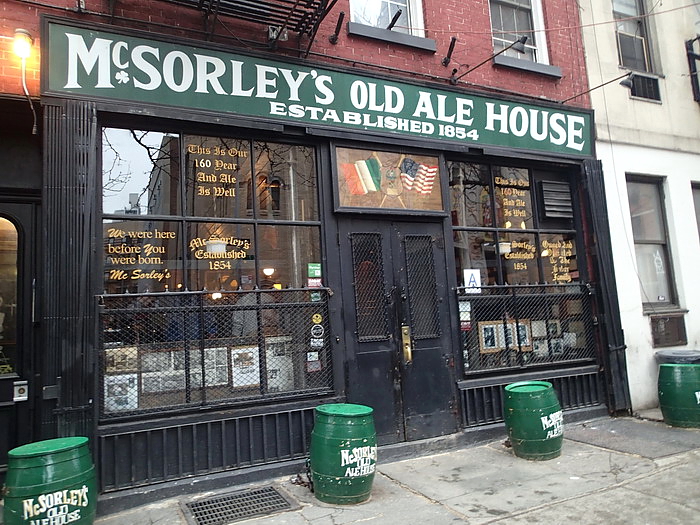
Stuyvesant Street starts at the north-east corner of Astor Place and ends at 2nd Avenue by 10th Street. At that corner is the nice looking, small St. Mark Church which basically, since it was built in the early 1800s, serves as a local art centre. Famous artists like Isadora Duncan or Martha Graham danced here.
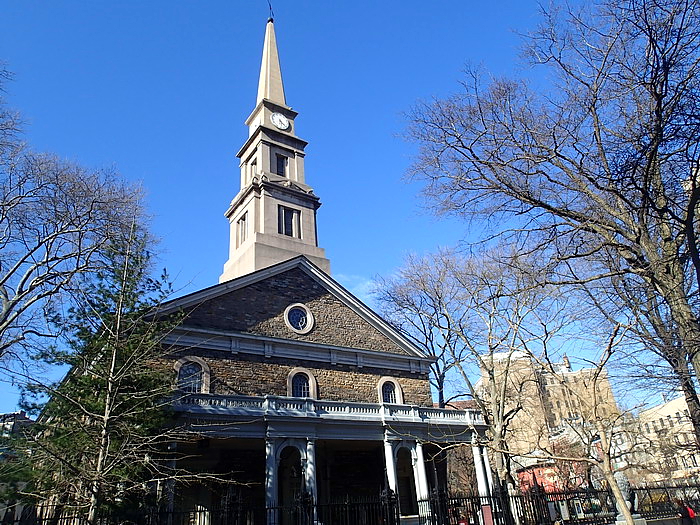
I had the best and freshest sushi in the city at the Kano Yama restaurant at 175 2nd Avenue (11th Street).
The Abraco Espresso, at the corner of E7th Street and 1st Avenue, is the city’s best café according to the 2014 Zagat Guide (it’s only open till 4pm and closed on Mondays).
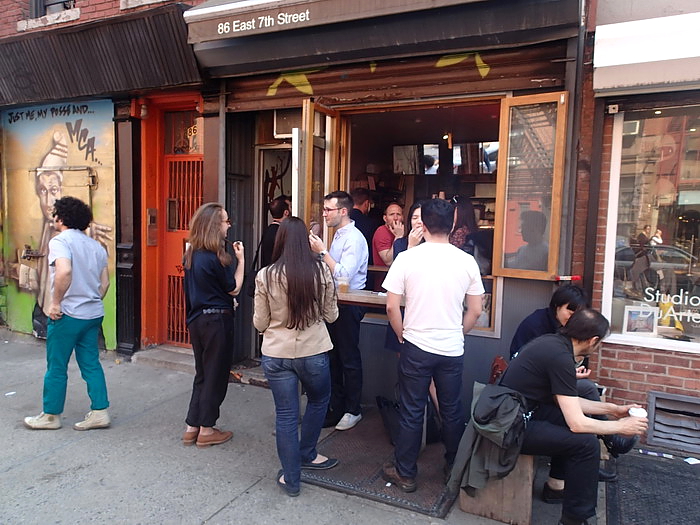
Actually, I found the coffee at Everyman Espresso to be the best (corner of Canal Street and West Broadway).
There are numerous Indian restaurants on East 6th Street, and the legendary Odessa is by Tompkins Square at 119 Avenue A (between 7th Street and St. Marks Place). Neon lights, plastic chairs, noise and smell – so not a romantic dinner place but it’s cheap, tasty and real Ukrainian cooking.
St. Marks Place is between 7th and 9th Street, it’s the alias of 8th Street between Astor Pl. and Avenue A. These few blocks are the pulse of East Village with lots of interesting little stores and cozy cafes.
One great little place is Mamoun’s Falafel, where they serve heavenly, fresh, soft fava bean falafels. Another sensational spot is Xi’an where it’s worth trying the hand pulled noodles.
One street away, on 9th Street, is Otafuku, serving Japanese streetfood, it’s super tasty and cheap. It’s best to try the “B” combo: okonomyaki and takoyaki.
There is also excellent ramen at Ramen Misoya, on 2nd Avenue between 7th and 8th Street. They have three miso bases, you can pick the ingredients and one plate of this hearty soup will fill you up. I tried it Kyoto style with vegetables (yasai ramen) but also asked for some pork – it was perfect.
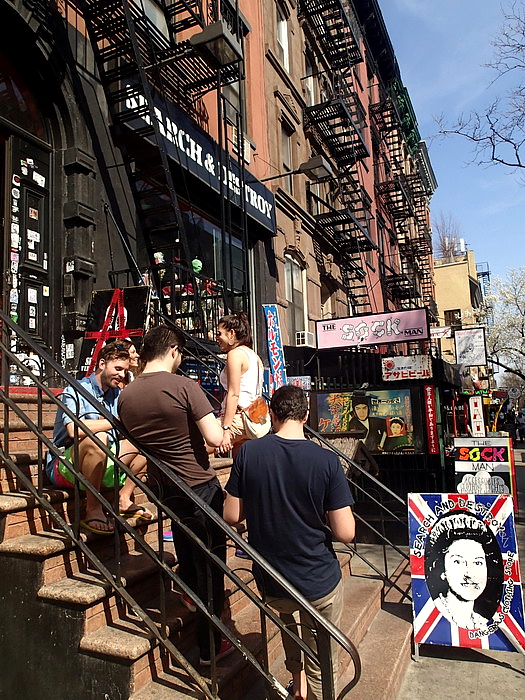
St. Marks Place ends at Tompkins Square, which was the cradle of political demonstrations and radical ideas. That’s where Alphabet City starts and the numbered avenues switch to letters because Manhattan is getting fatter in this part. A couple of decades ago, Tompkins Square was very much a place for druggies but the area is much cleaner now. Of course this has also a disadvantage for the locals: since the area improved, people with more money started to move in and the rental prices are beginning to rise. Students, Puerto Ricans and unemployed artists are still in the majority but more and more real estate speculators see potential in building in the vacant lots and restoring run-down buildings. The order is always the same: first come the artists, then the galleries, the restaurants and finally the real estate agents.
Improved area or not, don’t venture east of Avenue B at night and I can only suggest going behind Avenue D to the most hardened drug dealers – here even the police only dare to go in threesomes. Avenue A is full of people at night, so generally safe.
Photographers should come here at dawn when the shutters are still down. That’s when we can admire the colourful paintings on the shutters, it’s worth getting up early to see them. But even when the shutters are up, there is still more to see since the area is full of graffiti. Lots of these are memorials to drug victims.
There are cute community gardens set up in vacant lots, for example on the corner of 6th Street and Avenue B, where the locals can go tomatoes on tiny plots rented for a couple of dollars. A few steps away is the Creative Little Garden, with its numerous bird-feeders which is known for its bird life.
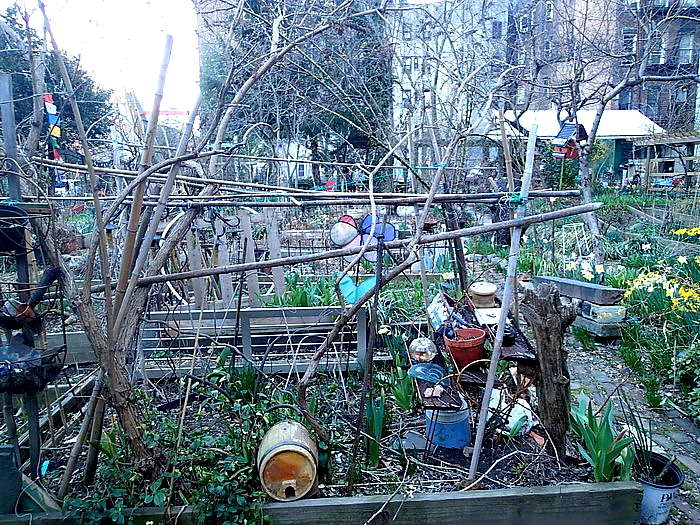
Turning towards downtown, let’s look around 2nd Avenue (near 8-10 Street) which is the traditional home of the Ukrainian community. On the corner of 2nd Avenue and 9th Street is Veselka, serving traditional Ukrainian dishes since 1954, and interestingly it serves breakfast 24 hours.

The Italian Veniero Bakery, with its original lead glass ceiling, has been by the crossing of 11th Street and 1st Avenue since 1894.
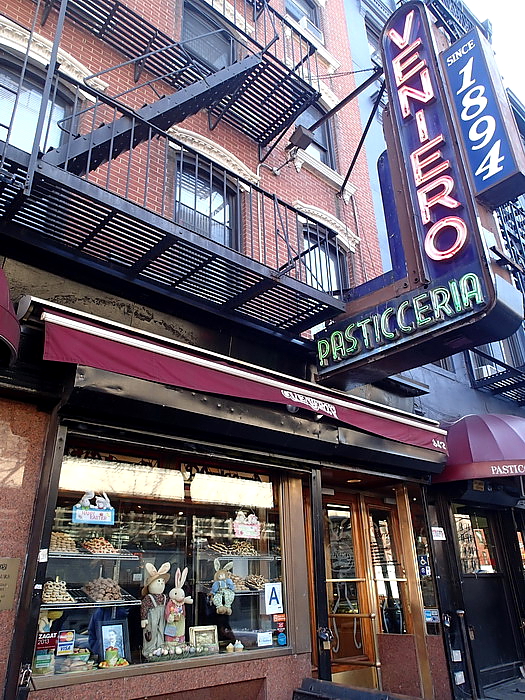
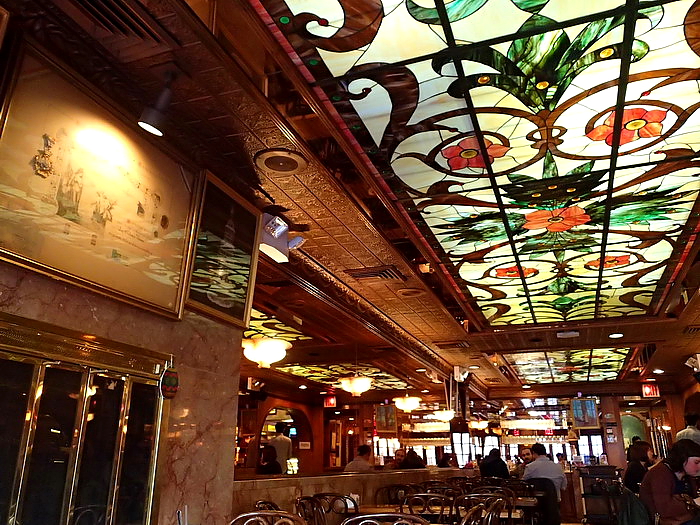
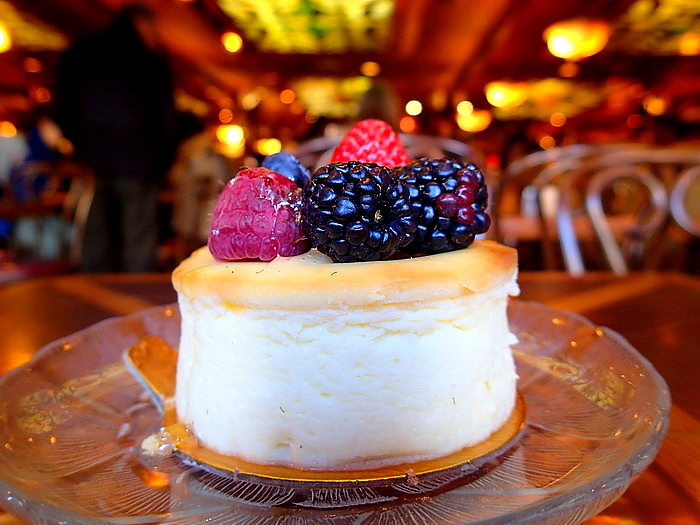
There is also a great Japanese restaurant in the area at 171 First Avenue, the Momofuku noodle bar.
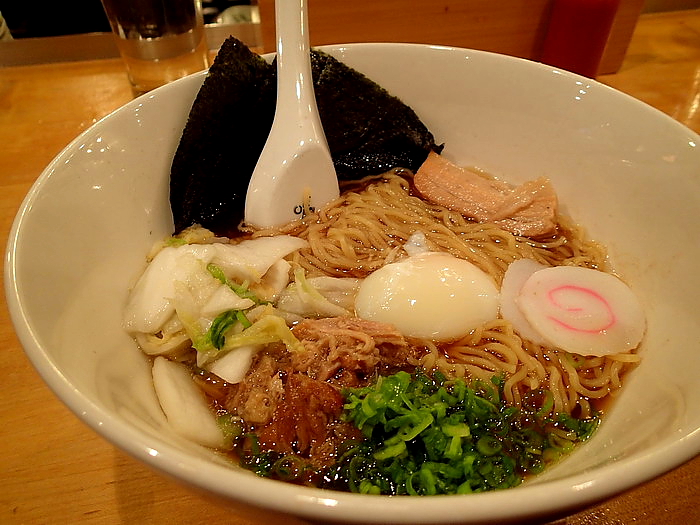
If someone is looking for Hungarian flavours, there is goulash at Korzo Haus restaurant at 178 E7th, between Avenue A and B. You can also find a really special dish, hamburger inside a langos (deep fried flat bread).
